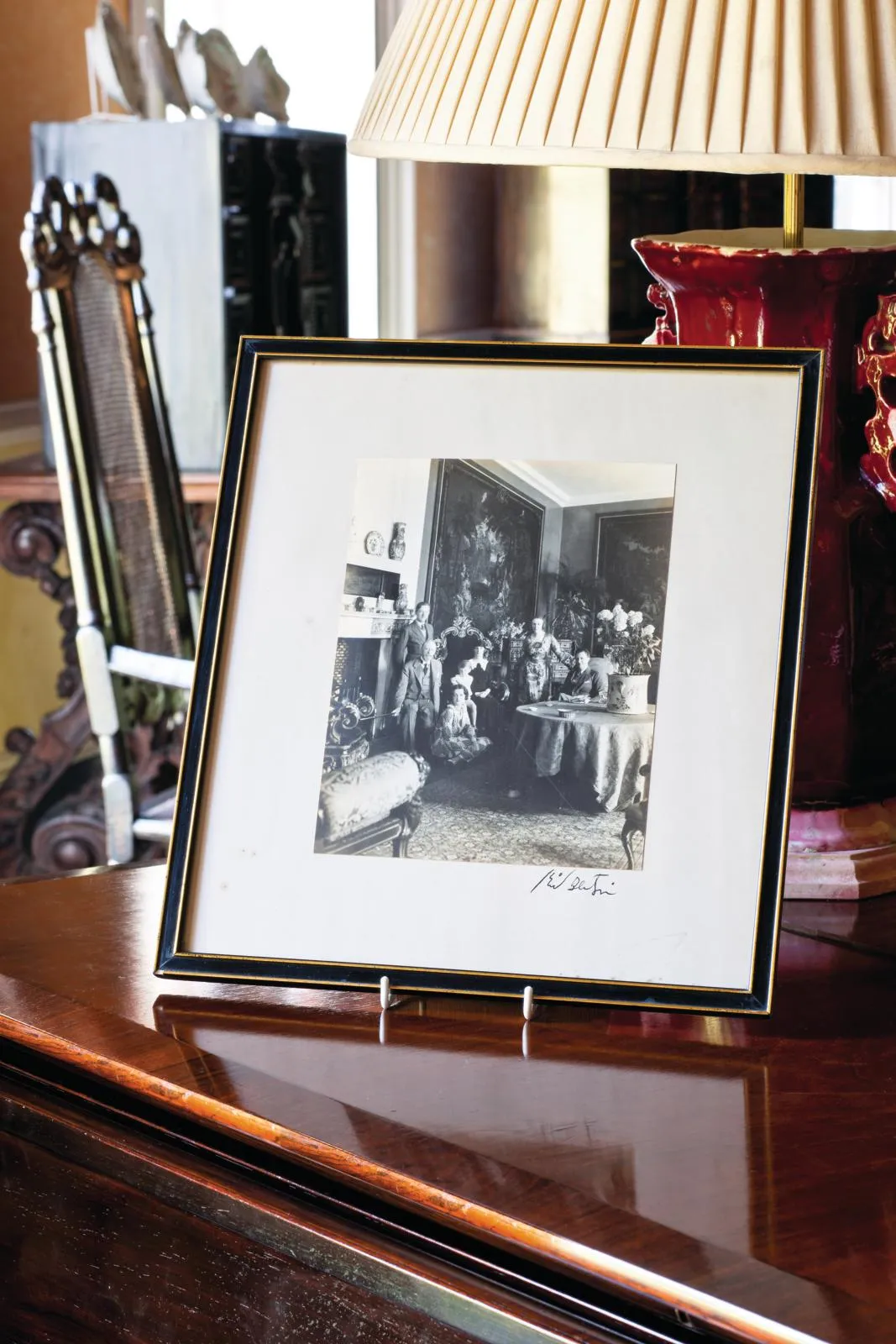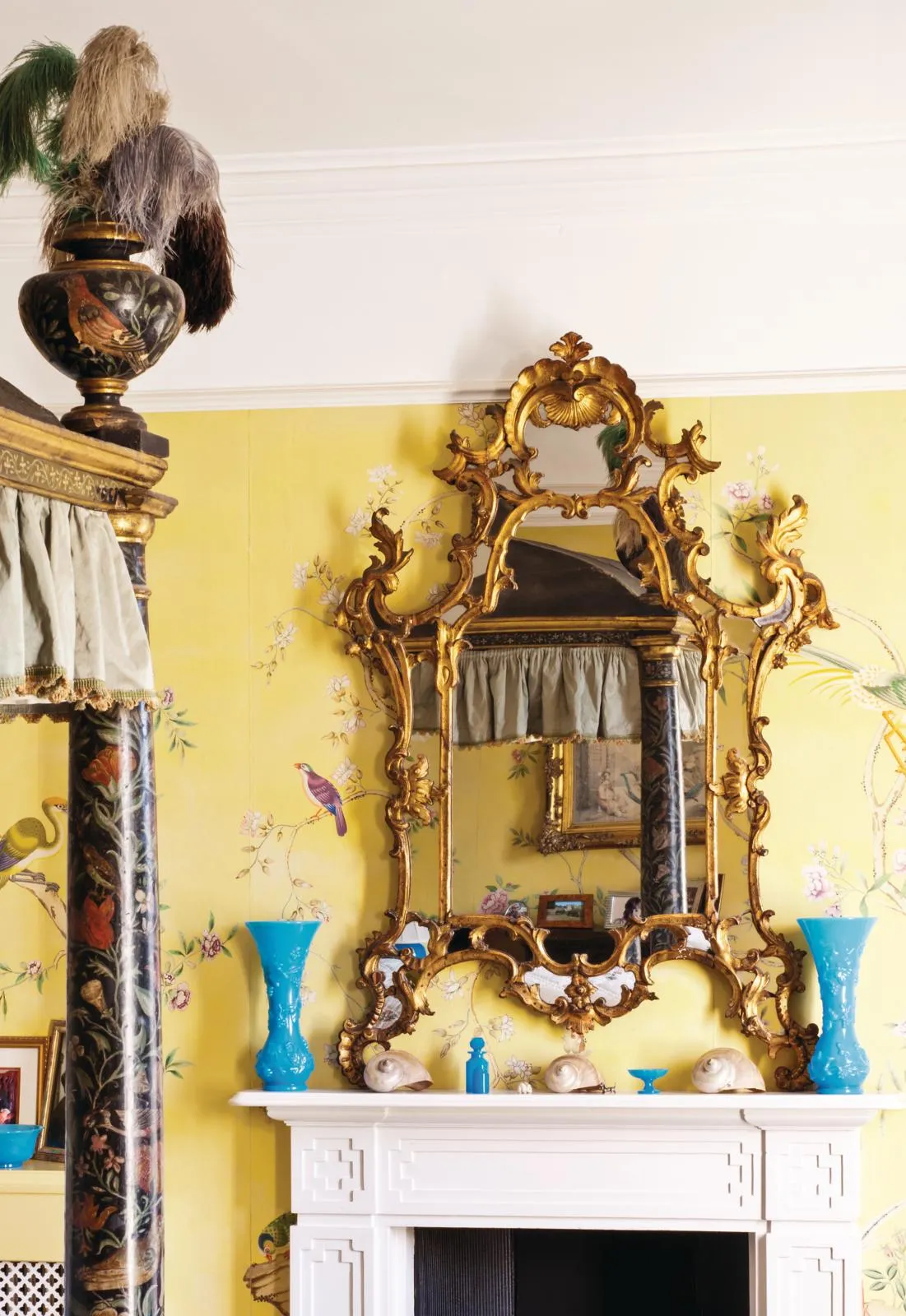Nobody forgets their first visit to Renishaw Hall. Where else would you be greeted by two life-sized Italian warriors from the 17th century? The idiosyncratic swaggering pair embody Renishaw’s charm. One smiles, one snarls; one is decked with spectacles left by a forgetful visitor, the other sports a Victorian beaded handbag. Welcome to the world of the Sitwell family, they seem to say, and be prepared for extravagance, wit and surprises.
The Sitwell’s family home for 400 years, this is a house in which the unconventional and the traditional, opulence and restraint, modern art and Old Masters, blend seamlessly. It also has a comfortable feel. ‘It is our home,’ says Alexandra Sitwell, the owner. ‘We live in it and use every room, so it isn’t a museum, although I do love showing it off to people.’
Renishaw has been her home since she was seven, when her father Sir Reresby Sitwell inherited the house from his uncle. ‘It was very different in those days,’ she recalls. ‘It was pretty bleak and uncomfortable. We didn’t have electricity until 1958 and there was no heating until 1969. But I still thought it was heaven.’
You might also like explore Prideaux Place in Cornwall
The discomfort was no hindrance to Renishaw’s metamorphosis into a cultural and social nucleus. In the 1920s and 1930s it played centre stage to the famous Sitwell trio: writer and patron Osbert; his sister Edith, a poet and performance artist with amazing cheek bones and a penchant for silver nail varnish; and the younger brother, the art-loving historian Sacheverell. They stood at the forefront of the Bright Young Things of the interwar period.
Leading writers and artists such as DH Lawrence, Evelyn Waugh, John Piper, Rex Whistler and Cecil Beaton came to visit and often left their mark. In the entrance hall are three huge paintings by Piper: Derbyshire Domains; a view across Renishaw’s roof tops; and a Venetian triptych.
‘Piper came to stay to illustrate Osbert’s memoir and fell in love with Renishaw,’ explains archivist Christine Beevers. ‘The house contains the largest private collection of Pipers in the country.’ The triptych was painted to go over the fireplace and had never been moved until this year, when it was taken down for restoration. ‘We discovered only then how narrowly it had escaped bursting into flames because there was so much tar behind it,’ says Christine.
Renishaw’s rambling Georgian Gothic-style architecture encloses a compact 17th-century building. The original manor house, built in 1625, was of fairly modest proportions. Then in the late 18th century Sir Sitwell Sitwell, the 1st Baronet, upgraded it, adding three large rooms of lavish scale: a vast ballroom, a dining room and a 17m-long drawing room.
You might also like inside Deans Court in Dorset
‘He was a shrewd buyer of furnishings,’ says Christine. One of his acquisitions, a commode by Thomas Chippendale, takes centre stage in the great drawing room. Made in the 1770s and bought at a sale in 1802, it is one of Renishaw’s greatest treasures.
‘When the artist John Singer Sargent was commissioned to paint the family portrait in 1900, the commode was transported to Sargent’s London studio, with one of the tapestries, to form the background,’ says Christine. Showing the 4th Baronet Sir George Sitwell, with Lady Ida and their children Edith, Osbert and Sacheverell, the portrait now hangs, appropriately, over the commode.
The drawing room was redecorated in the 1960s by Alexandra’s parents. ‘Until then the room was in a sorry state and the curtains were in shreds. The family fortunes had suffered in the mid 19th century following a succession of misfortunes, and in 1849 the contents were sold and the house closed down,’ Christine explains.
Only when a new seam of coal was discovered nearby could the family begin to bring Renishaw back to life. But it was a lengthy process. The floor, stencilled in the 1970s to imitate an inlaid wooden floor in the Pavlovsk Palace, in St Petersburg, was a characteristically creative way to avoid buying a new carpet.
‘To me each room has a special feel and a special message,’ says Alexandra. ‘The drawing room has the wow factor and I love the formality of the dining room, with the Blue John tables that my mother gilded, but I also love the library because that’s where we relax and sit in the evening with the fire going.’
You might also like explore the eclectic interiors of Wardington Manor
With its original Jacobean plaster ceiling, and some 3,000 books, the library contains an exquisite portrait of Edith by Rex Whistler, and what may be the oldest piece of furniture in the house – a bobbin chair dating from c1600. By contrast, in the bay window overlooking the garden stands a striking 20th-century glass tiger. ‘My parents bought it from the Murano Glass Factory. My father was passionate about the way it catches the light,’ says Alexandra.
As each generation has done, she has brought her own style to the house. A fascinating collection of black and white photographs, many by Cecil Beaton, are displayed on a staircase; a frieze of Piper paintings has been arranged in the smoke room; a haunting portrait of Edith Sitwell by Stella Bowen is placed on the table in the entrance hall.
‘I have introduced more light into the house, adapting it to the way we live, and brought furniture from London.’ As for Alexandra’s own collecting inclinations, she is adding to the set of Sitwell books in the library. ‘But my heart is drawn to modern and contemporary art and that’s what I aim to collect in the future,’ she says. Given her family’s artistic legacy, it seems an appropriate ambition.














